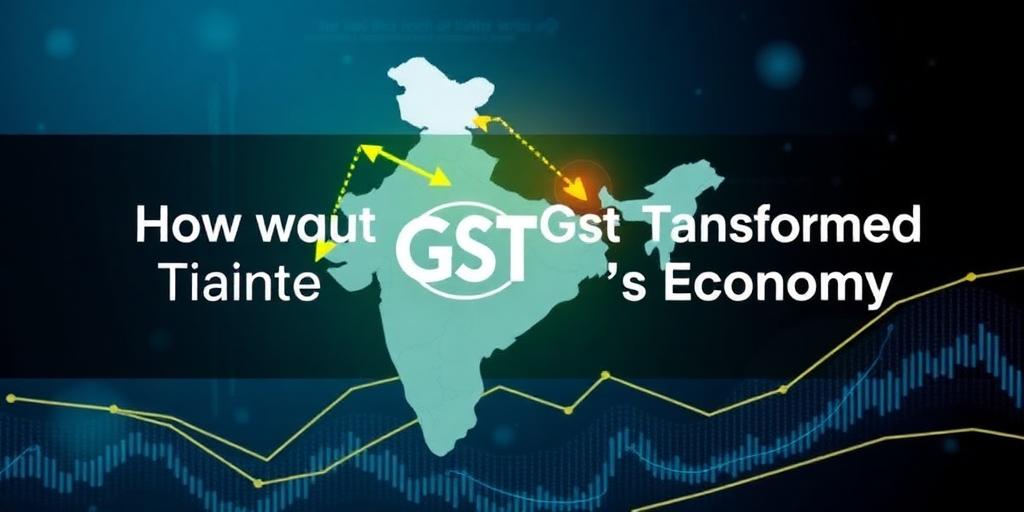India's economic landscape underwent a monumental shift with the introduction of the Goods and Services Tax (GST) in July 2017. Heralded as the most significant tax reform since independence, GST aimed to unify a fragmented and complex indirect tax system into a single, comprehensive levy. This transformation has had profound implications, fundamentally reshaping business operations, enhancing tax compliance, and driving India towards a more integrated and efficient economy.
Before GST, India's indirect tax regime was a labyrinth of central and state-level taxes, including excise duty, service tax, VAT, CST, and numerous cesses. This multi-layered structure led to a cascading effect, where tax was levied on tax, increasing the final cost of goods and services. It also created significant compliance burdens for businesses operating across different states, hindering the free movement of goods and distorting supply chains. The need for a unified tax system India economy was paramount to unlock its full potential.
The Unifying Power of "One Nation, One Tax"
The core philosophy of GST — "One Nation, One Tax" — sought to eliminate these inefficiencies. By subsuming over a dozen central and state taxes into a single, comprehensive tax, GST simplified the tax structure. This simplification directly translated into a reduction in the multiplicity of forms, returns, and assessments, easing the compliance burden for businesses. The implementation of a nationwide electronic e-way bill system further streamlined logistics, facilitating the seamless inter-state movement of goods and reducing transportation costs and transit times. This was a critical step in boosting business efficiency and logistics.
Enhanced Tax Compliance and Revenue Generation
One of the most significant impacts of GST has been on tax compliance. The input tax credit (ITC) mechanism, a cornerstone of GST, incentivizes businesses to declare their transactions and pay taxes at each stage of the supply chain. Since a business can only claim ITC on taxes paid by its suppliers, there's a strong motivation for both parties to ensure all transactions are formally recorded. This digital trail has substantially increased tax transparency and brought a larger segment of the informal economy into the formal tax net. Consequently, government revenue collections have shown a consistent upward trend, demonstrating the success of GST in increasing tax compliance and revenue.
Mitigating the Cascading Effect and Boosting Competitiveness
Prior to GST, the cascading effect made Indian goods and services less competitive in both domestic and international markets. Businesses paid taxes on inputs, and these taxes were not always creditable against output taxes, leading to higher final prices. GST effectively eliminated this by allowing a seamless flow of input tax credit across the value chain, from manufacturer to consumer. This reduction in the overall tax burden has made Indian products and services more competitive, fostering a more conducive environment for 'Make in India' initiatives and attracting foreign investment. The economic reforms GST India brought were crucial for this.
Challenges and Ongoing Evolution
Like any reform of this magnitude, the implementation of GST was not without its challenges. Businesses, particularly small and medium enterprises (SMEs), initially faced hurdles in adapting to the new digital compliance requirements. Technical glitches in the GST Network (GSTN) and frequent changes in tax rates and rules also posed initial difficulties. However, the GST Council has shown remarkable agility in addressing these issues, demonstrating a commitment to continuous improvement. Regular amendments, rate rationalizations, and simplified return filing processes have been introduced, showcasing GST's role in India's growth and its adaptive nature.
A Foundation for Future Growth
Ultimately, GST has laid a robust foundation for India's economic growth and integration. By creating a common national market, it has removed inter-state barriers to trade, fostered greater economic efficiency, and enhanced the ease of doing business. The journey of GST reflects India's ambition to modernize its economy and position itself as a global economic powerhouse. The impact of GST on Indian economy is undeniable, setting the stage for sustained development and fiscal stability for years to come.




